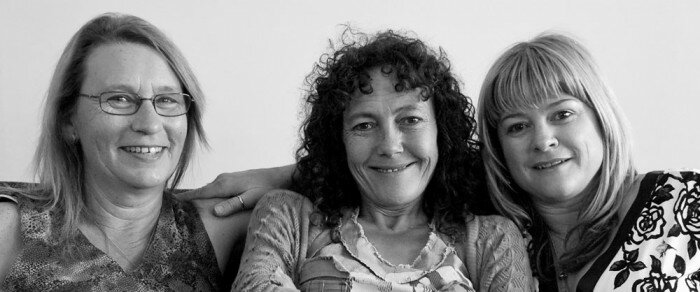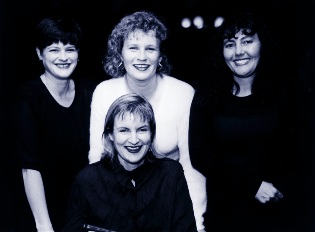Gillian Armstrong probably saw the interesting dynamics of UK TV documentary Seven Up! (1964) and its consequential sequels; she herself then chose to journey with three women over 35 years in her own quest to discover and reveal the differences of human life. It’s interesting that as 14-year-olds, the trio we see in Love, Lust and Lies insisted on being honest about their lives, but in the years to come we see that as life changes so do morals, and secrets become the foundation of relationships.
Documentaries regarding human life hold a sense of understanding and even belonging as the audience can relate to the unglorified subjects better than in fictional stories. For Armstrong, using young ladies Josie, Kerry and Diana (found at a youth centre function) shows how impressionable adolescents can be. As we see highlights of Armstrong’s first film Smokes and Lollies (1975), the Adelaide trio as best friends act as a source of raw angst and reveal the ideals of the average teenager in the Australian 1970s. Love, Lust and Lies acts as a complete wrap-up of the series, with the first half hour dedicated to a chronological recap; snippets from Fourteen’s Good, Eighteen’s Better (1980), Bingo, Bridesmaids & Braces (1988) and Not Fourteen Again (1996, ladies pictured below with Armstrong) show how life had changed as they went through young adulthood. With the largest gap between films the one preceding Love, Lust and Lies, to see the trio jump from young mothers to middle-aged ladies is intriguing – because of both their current situations and seeing the change in Adelaide suburbia from the 90s to now.
As the film continues, it’s clear that honesty isn’t the best policy within at least one of the ladies’ households as Armstrong delivers one secret exposed after another. It’s hard to grasp just how soap-like the lives of these ladies actually seem, especially towards the film’s end; they may not live in glamorous areas by any means, but these working-class ladies have done enough to earn their own story. As Kerry remains the most, well, stable of the three, we don’t see as much of her because of her relative ‘normality’. Meanwhile, Diana and Josie provide some surprising laughs as we see their roller-coaster relationships with numerous partners and children – to the point where many of the kids become the centrepiece of the story and it’s hard to keep track of who’s who. At the same time, there are a few select moments where Armstrong brings it down to a painfully raw level; it’s sad to see how certain things weigh on their minds as they reflect on regrets and mistakes.
It’s obvious the ladies are no longer the best of friends they were all those years ago, but this appears as a part of life and it’s nice to see the director’s influence bring them together to look back on how the camera has captured and influenced their lives. What makes Armstrong’s delivery of Love, Lust and Lies a fairly strong package is her surprisingly intriguing subjects. For these run-of-the-mill ladies, their personalities don’t change a bit amid the constant bustle (or lack of) in their lives, and as they begin raising their families it’s clear that they each become their own person – but the insecurities they carried as teenagers remain almost identical. Much of this information is piled on towards the end of the film, and this is its weakest point. However, Armstrong makes up for it in changing the shots and stories up so the feel is never the same for too long. Good cinematography by Paul Costello helps to see a film easy to watch, even with a not so glamorous setting.
Verdict
Love, Lust and Lies brings stories that are hard to believe yet somehow not surprising. It’s an interesting paradox, and it shows why we find human lives so fascinating.
 Follow the author Katina Vangopoulos on Twitter.
Follow the author Katina Vangopoulos on Twitter.





![Love 14 [Amore 14] (Review) Love 14 [Amore 14] (Review)](/wp-content/uploads/amore14_011-150x150.jpg)
![The A-Team [2010] (Review) The A-Team [2010] (Review)](/wp-content/uploads/jessica-biel-as-lt-sosa-the-a-team-movie-image-400x6001-150x150.jpg)










